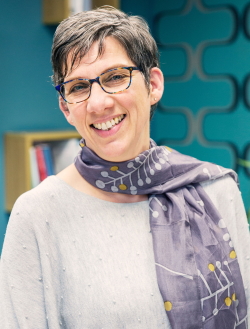Over the last few years, we have refined an approach to understanding change into a simple framework that can be used by organisations that face these challenges.
This is a core element of our approach to supporting organisations and the basis of our software OutNav.
Our approach helps you to map your initiative’s activities through different levels of outcomes (or impacts) to understand how you make a difference. This creates a framework for communication, learning, evaluation and reporting.
A theory of change approach
We use plain language headings to help teams distil and interrogate the changes they seek to make with their public service initiative (this could be a project, programme, organisation or multi-organisation partnership).

This is a theory of change approach, which aims to uncover how these kinds of people-influencing projects really make a difference.
Unlike other similar approaches, our approach builds on contribution analysis, which puts people at the centre of change. That’s why we include a level of outcomes heading ‘How they feel’ – it ensures that the reactions of intended recipients of a programme, policy or intervention are included in understanding why and how change might happen. If people react positively to engagement then learning, behaviour change and wider benefits can flow from the programme. If not, then none of the intended changes can happen.
A flexible approach
Using our approach can be a simple or complex process depending on the size, scope and ambition of your work.
Some more simple uses of the headings include, to:
- tell a success story of when an intervention, programme or policy worked well for people and how this happened
- create a case study that demonstrates how an activity contributed to improved outcomes for a person
- describe a simple and well-defined intervention, like how a support project helps people.
Our headings in action
When we work with an organisation, we bring people together to collaborate on creating a map of activities to outcomes using our headings; we call this an outcome or impact map. If their work is complex, multi-partner, organisation wide, or more experimental or innovative, they often need a lot of support to create an outcome map that will work for their organisation, communicate their work well, and form the basis for learning, evaluation and reporting. We have refined our expertise over the last few years and have developed a way of facilitating this process effectively for organisations.
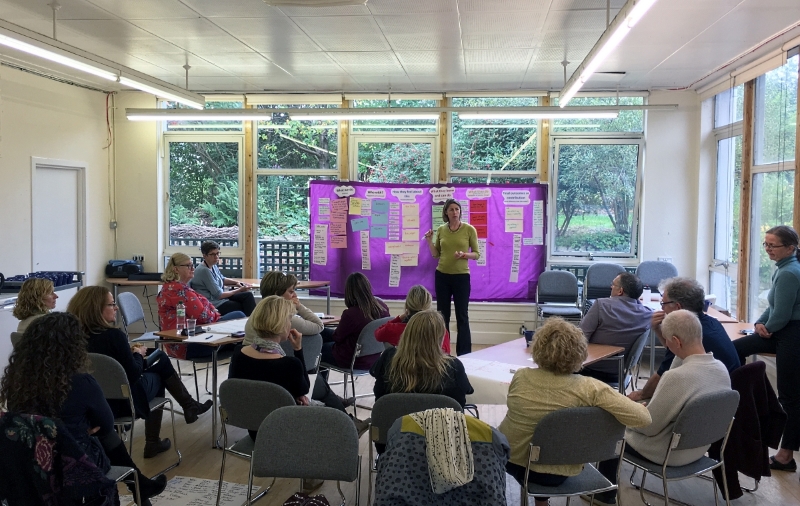
Try it for yourself!
Try outcome mapping for one of the simple examples described above. You will need a set of our headings and some post-it notes or a cards.
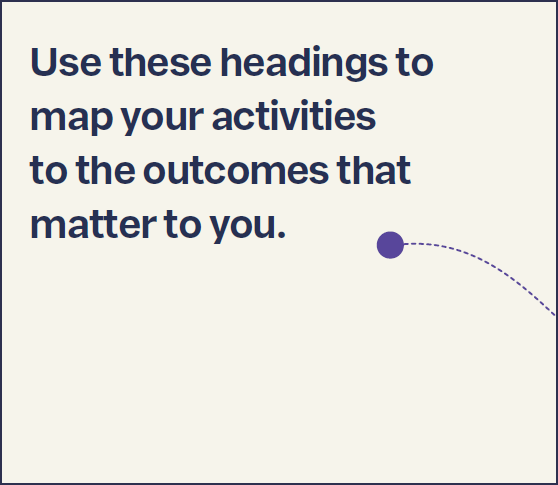
Download a copy of our headings.
DownloadFirst, lay out your headings in order (1 to 6). Then, using the following prompts as guidance, create lists under each heading. It is important to use a separate post-it note or card for each item you write so that you can easily refine, replace and move them around.
What we do: Write down the key activities your project delivers.
Who with: Write down everyone who engages with these activities. This could include service users, staff and funders, for example.
How they feel: Write down the expected positive reactions people will have if they engage with the activities offered.
What they learn and gain: Write down the changes to their knowledge, skills and attitudes as a result of positive engagement with your activities.
What they do differently: Write down any positive changes to their behaviour and practice based on these changes in knowledge, skills and attitudes.
What difference does this make? Articulate your project’s final outcomes – what difference does it make if people change their behaviour in the ways you describe? This is where higher level outcomes like people being healthier, happier or better off can be included.
Outcome mapping tips
- There is a discipline to being clear about the different outcome levels – make sure you separate out your activities (What we do) from engagement (Who with), learning outcomes (What they learn and gain) from behaviour change (What they do differently).
- You don’t have to start at one end and work to the other – add what you know first, and then work out the logic in-between (e.g you might know what skills you aim to improve, but you haven’t thought about how people feel).
- It can take a while to get the descriptions right – just keep trying and refining.
- Start simple and build up to more complex interventions or programmes.
- Come to us for help and support if you need it!
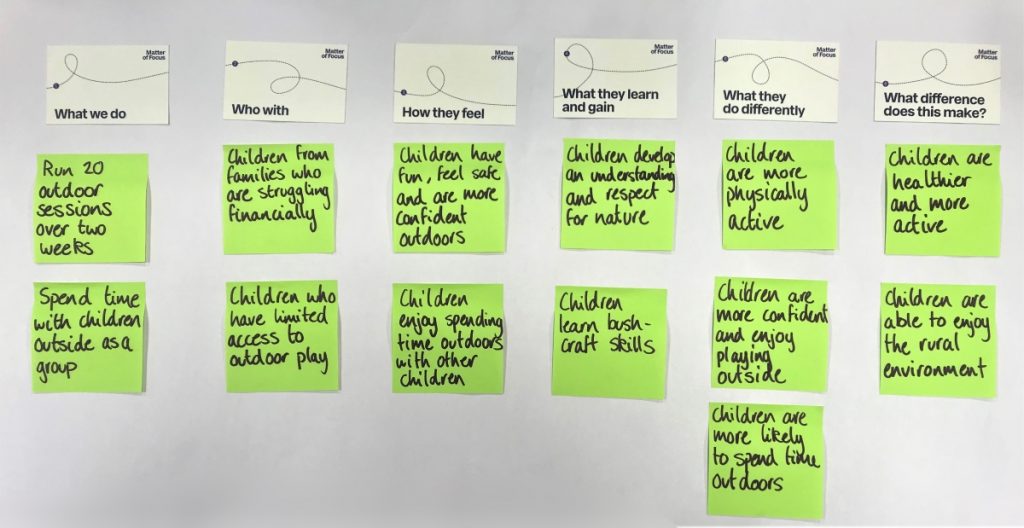
Outcome map uses
This approach is suitable for a range of purposes in outcome evaluation. Here are some examples to get you thinking about when you could use your outcome map:
Plan an intervention
Use our approach to set out how you think the intervention will work. Here you would use the headings as a framework for plotting out your intervention when you are writing a funding application or planning it.
Communicate how you make a difference
Using the headings as a framework, you can create an outcome map that can be shared with stakeholders, service users and funders that clearly communicates how you make a difference.
Learn, monitor and improve
Your outcome map can also be used to monitor what you’re doing, through reflection or feedback, learn from it and adapt and improve your project or intervention as you deliver it.
Evaluate your intervention
The outcome map can be used as a framework for evaluation. You can gather data against each item in your map and analyse it to report on your project’s achievements or to pass on to an external evaluator to scrutinise.
Tell your story
An outcome map really helps to create outcome-focused reports that demonstrate how you make a difference.
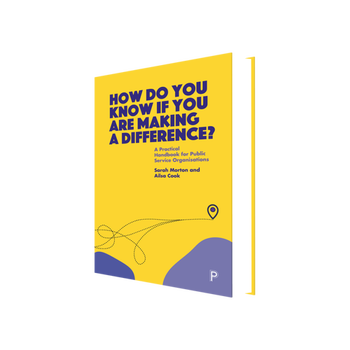
Co-authored by Matter of Focus Directors Sarah Morton and Ailsa Cook, this practical handbook sets out our approach and contains a host of ideas, principles and tools to help you understand and track the difference your initiative makes. Find out more about the book.
Join us for a live demo
If you’re exploring our approach and would like to learn more about how we help organisations implement and embed it so that they can understand, track and report on the change they make, please come along to one of our demo sessions. These are informal sessions with a brief presentation about our approach and our supporting software OutNav and an opportunity for you to ask questions and have a chat about your work, if you’d like to.
